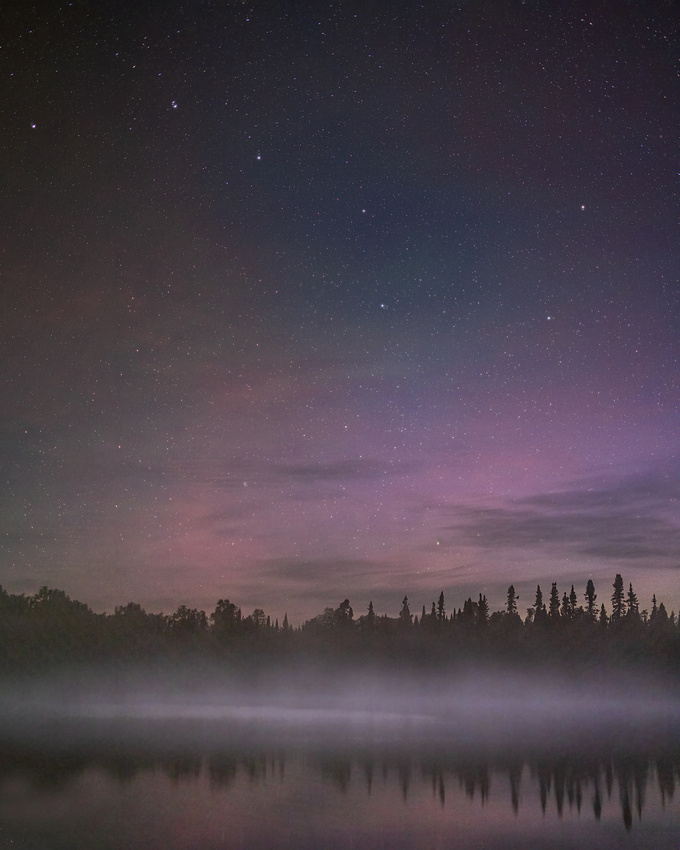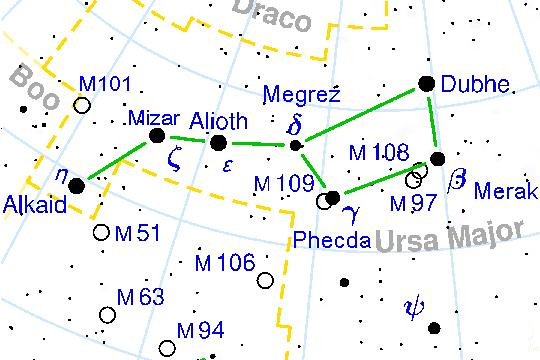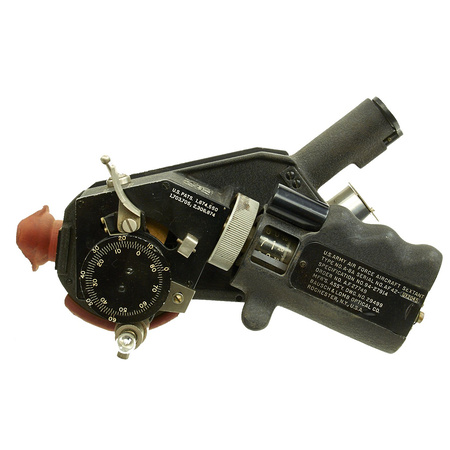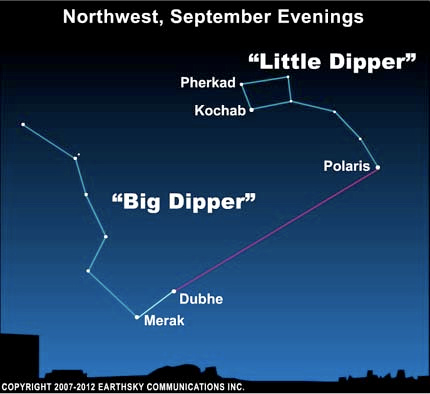The Big Dipper


Asterism [ˈastəˌrizəm]
Astronomy—A prominent pattern or group of stars, typically having a popular name but smaller than a constellation.
The Big Dipper is a large asterism consisting of seven bright stars of the constellation Ursa Major. Four stars define a "bowl" and three define a "handle.” This distinct grouping has been recognized for millennia.


By http://en.wikipedia.org/wiki/User:B00P & me (SAE1962 10:04, 2 April 2008 (UTC)) - English Wikipedia, but modified it., CC BY-SA 3.0, Source: https://commons.wikimedia.org/w/index.php?curid=3815568
In ancient Hindu astronomy, the Big Dipper is known as Sapta Rashi or The Seven Great Sages. Each of the seven stars represents one of the seven rishis of ancient India. In ancient Arabic astronomy, the stars of the Big Dipper symbolized a funeral procession. The Big Dipper’s bowl represents a coffin, and the three stars marking the handle are mourners following it.
According to Scandinavian mythology, the stars of the Big Dipper are called Odin’s Wain or Wagon. In Japan, the Big Dipper is called the “North Dipper.” These seven bright stars belonged to Ame-no-Minakanushi, the very first or one of the first deities that created heaven and earth.
And in Korea, the constellation of Ursa Major is referred to as the “seven stars of the north.” In a related myth, a widow with seven sons found comfort with a widower, but to get to his house they had to cross a stream. Each of the sons placed steppingstones in the river. Their mother, not knowing who put the stones in place, blessed them and, when they died, became the constellation.
Dad’s Astronomy Lessons
Some of my fondest childhood memories are going outside with my dad to explore the night sky. As an Air Force navigator on B-29 bombers and then C-130 cargo planes, his knowledge of astronomy kept the crew safely on course during long ocean crossings. There wasn’t any GPS back then! He used a timepiece and a sextant, like this Bausch and Lomb model A-8A to take a sight of Polaris, the North Star, to locate his position.


I was probably 7 or 8 years old when he pointed out the Big Dipper to me for the first time. He taught me that by extending an imaginary line through Merak and Dubhe, you can find Polaris, the North Star, in the Little Dipper. And finding north is the first step in staying “found” as a navigator.


The Shot
On July 9, at 3 am, I was on the shore of Cascade Lake near Grand Marais, Minnesota photographing the night sky. The “brisk” 41-degree temperature help form fog over the lake and simplify the scene. It also kept the normally ravenous mosquitos stupefied rather than hyperactive.
In addition, there were just a few interesting clouds and some color from the Northern Lights in the distance. Noticing the Big Dipper, I decided to make it the “star” of the show.
Just a half hour later, the best light had passed. I drove home exhausted and full of joy at experiencing such a special night sky. An hour later, I was back to the hotel for some much-needed sleep in a warm bed.
Thanks for looking,
Chuck